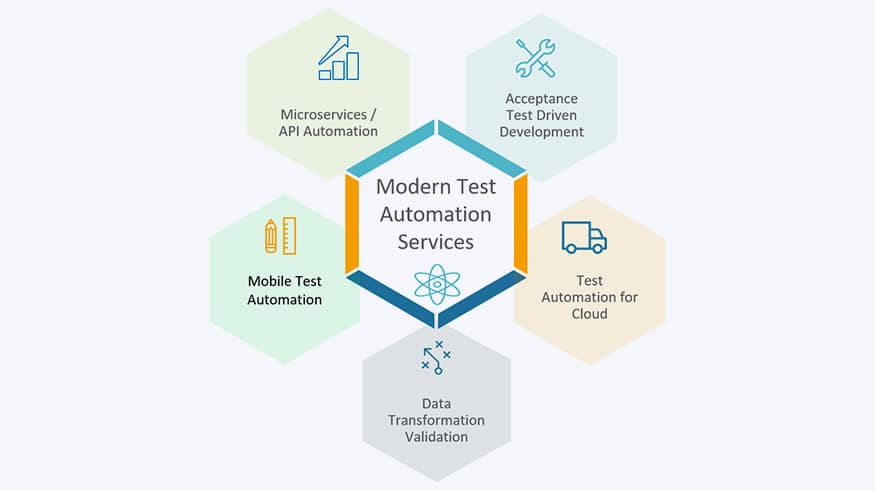What We Offer
Our Capabilities

Embracing the cloud to manage data
Gain accurate, real-time and actionable insights with better data management and analytics.
“Data from disparate sources makes it difficult for organizations to get a unified view. Increased computing power, mobile technology, thousands of news feeds and sources, the rise of digital businesses and millions of IoT devices have spawned an exponential growth in the volume of data. Combine it with decreased storage costs and the transition to cost-effective, elastic public and converged private clouds.
However, with data comes a large responsibility. How do you collect it? How do you store it? Can you trace it back? To derive value and business benefits, it has to be gleaned, sorted, moved, processed, analyzed and integrated correctly to offer actionable insights. Decisions, policies, strategies and the ways of working are all defined by analyzing past data and determining future trends. To get actionable insights that reap business benefits, businesses need an effective cloud and data migration and management strategy.
Whether it’s “lift-and-shift,” migrating from a legacy database to a cloud-native database, determining the ETL framework, moving to an IaaS provider to support a broad variety of analytics workflows, zeroing in on SaaS or PaaS offerings, customer organizations could leverage a combination of these offerings to define a comprehensive cloud-based modern data architecture. As several businesses are firming up their cloud strategies, they find it difficult to get people with the right skill sets to execute and cloud migration and data integration plan.”

Create your UX Toolkit
Get insights into customer preferences with brand and CSAT scores and predictive analytics.
User Experience design considers every aspect of how a user interacts with a product or a service. This involves information architecture, predictive analytics, usability and interaction design.
At Iris, we help you measure all aspects of your existing customer experience using quantitative insights, so that you can boost your customer experience strategy using our solutions. There are various parameters that can be used to measure and assess customer behavior, and once measured, these parameters
can be improved. For example:
- Net Promoter Score: Reflects the percentage of customers who would and wouldn’t recommend your brand.
- Customer Satisfaction Score: Reflects how satisfied customers are with a recent interaction.
- Customer Effort Score: Indicates the effort expended by customers in completing a task.
To further improve user experience, AI-driven applications are integrated to engage customers across multiple channels. The user experience solutions are designed to streamline data with a platform and automate decision-making for your business through channel optimization, thereby reducing operational costs and improving customer satisfaction.
The UIs of the future will have a conversation with the user, and not merely be a tool to display information. An interactive web design integrates applications into the web page and makes the interface more engaging for visitors. The high engagement is achieved by asking users to take actions of varying complexity when navigating through interface. These actions may involve tasks such as playing an audio or video, clicking, voting, playing a game, entering their location, giving a voice command, posting a photo, answering a question or making a comment.

Convert data into business assets, sharpen your edge
Build, deploy and manage cloud-based architectures.
We have partnered with several customers to help them convert their data into business assets to stay competitive.
We specialize in building, deploying and maintaining cloud-based modern data architectures spanning best-of-breed tools and technologies.
Our suite of solutions for data and analytics services comprises information management, ETL, enterprise data warehousing, data quality and governance, master data management and big data – data management and analytics.
We partner with industry leaders such as Amazon Web Services, and Microsoft Azure for an Infrastructure as a Service (IaaS) platform and IBM Bluemix for platform as a service (PaaS).
We offer a comprehensive suite of cloud computing services to help you innovate. Our consultants execute petabyte scale implementations with deep skills across Cloudera and Hortonworks distributions and Big Data skills of Hive, HBase, Sqoop, Spark, Yarn, Oozie, etc.
We have built a framework that helps organizations transform their traditional data applications — operational data stores (ODSs), data warehouses, other data platforms and practices within data warehousing and enterprise data management — to a modern data architecture. The framework covers transformation across the dimensions of data sources & types, data formats, data delivery, data and design pattern, data landscape and governance.
Aside from that, we partner with customer organizations in building domain-based centralized data lakes including provisioning for a raw, unrefined view of data to data scientists and analysts for further discovery and analytics.

Automate smartly, raise RoI
Intelligent automation powers software delivery lifecycles for speed and quality.
Given the heavy volume and complexity of data being shared today, integrating automated workflows and processes has become increasingly necessary in order to analyze and derive value from that data, and in a way that is as cost-effective as possible. Add unstructured data to the mix, and the intricacy multiplies.
Whether it is automating portions of a business process or automating portions of the software lifecycle, automation is everywhere and is delivering value. Aside from that, embracing intelligent automation is no longer an option today, but a critical requirement.

Business intelligence via report rationalization
Business organizations need to rationalize their many reports on a regular basis – either as a way to reduce costs, improve performance from a smaller report set, or as a precursor to migrating to a modern BI system that could bring data transformation in business intelligence.
Most business intelligence and data leaders today receive almost daily requests for new reports and analysis. Frequent user requests to test or acquire exciting new BI platforms is also common. Over time, many reports exist in different formats and locations. Managing this diverse ecosystem of reports is challenging and expensive, as they need to be stored securely and regularly maintained.
A new approach has emerged that utilizes the promise of data science, specifically machine learning (ML) and Natural Language Processing (NLP), to reduce the cost, time and complexity of managing and consolidating reports. NLP can be used to extract and read report headers or data labels—not the data itself—in any document type and from any platform. Data analytics service providers could design a roadmap and implement such efforts.
Similarly, ML can be used to provide a comprehensive review of all the existing reports and documents and automatically identify duplicates (reports providing data on the same report fields) as well as similar reports (reports with an overlap of report fields). This way only the ones that are required by the business and used regularly will be consolidated.

Enterprise integration, the iPaaS way
Managing the complexities of cloud and on-premises technologies needs smart strategies.
We help organizations move away from high-cost proprietary integration platforms and adopt modern lightweight iPaaS solutions. Also, our API strategy and implementation services cater to the unique regulations and standards within industry domains such as finance, logistics and transportation. We simplify integration by leveraging cloud native apps, streaming data and service mesh technologies.
Across industries, seamless integration of data and applications is a critical need. Organizational data is no longer centrally stored and managed in corporate data centers, with the widespread implementation of Software-as-a-Service (SaaS) and Platform-as-a-Service (PaaS). The inclusion of IoT, mobile and Big Data is making the integration environment even more distributed and complex.
Enterprise integration models have evolved over the years from limited point-to-point connections, to a centralized model connected through an enterprise service bus (ESB), to the most recent one of integration-Platform-as-a-Service (iPaaS). With iPaaS, organizations can have an enterprise integration strategy that manages the complexities of the hybrid era of cloud and on-premises technology.
iPaaS is a cloud-based service platform that enables application and data integration. iPaaS brings capabilities that are found in managed file transfer products, ESBs, API management platforms, B2B gateways, and data integration tools. iPaaS lets organizations mitigate the challenges of point-to-point integration as it offers a centralized design interface and administrative functions.
What We Offer

Intelligent automation
Our Intelligent Automation Accelerator called iASQ - Automated Service Requestor Automation is a framework to build a unified Omni channel interface to address service requests.
An machine learning-based suite of accelerator, iASQ stitches multiple channels like chatbots, email systems, collaboration platforms etc. and intelligently integrates with ITSM platforms like ServiceNow, Jira Service Desk etc. The iASQ engine is capable of handling automated triaging, adaptive capacity planning, automated resolutions, user self-service recommendations and evolving towards predicting & preventing future IT issues.

Our automation palette
1. Intelligent Automation
a. Accelerated Automation
b. Conversational Automation
c. Insight-driven process automation
2. Test Automation
3. DevOps Automation
The Iris intelligent automation themes combine a range of technologies to introduce automation within the context of a function or industry to create seamless end-to-end processes and experiences. Robotic automation when paired with machine learning and cognitive technologies, step up productivity and achieve the desired value.
Accelerated Automation: This further comprises Robotic Process Automation that involves rules-based processes which can either be fully automated or assisted manually in case of exceptions and are typically orchestrated in standard platforms.
Point Automation: Applies to automating specific tasks at an individual user level. These are largely suited for batch operations and work queue/schedules
Conversational Automation: This involves automating a conversation in the form of Virtual Assistants for providing information, aiding in performing actions and offering recommendations with the help of Natural language understanding
Virtual assistants engage with users in an interactive manner. They also interact with backend systems to fetch and deliver information, aid a user in completing a task and make recommendations on the basis of understanding their intent.
Insight-driven process Automation/ Cognitive Extensions: Cognitive extensions further supplement and enhance the above automations such as Speech to Text conversion, contextual speech and extraction from images, documents, speech and text.
Contact
Our experts can help you find the right solutions to meet your needs.
Get in touchIndustries
Company
